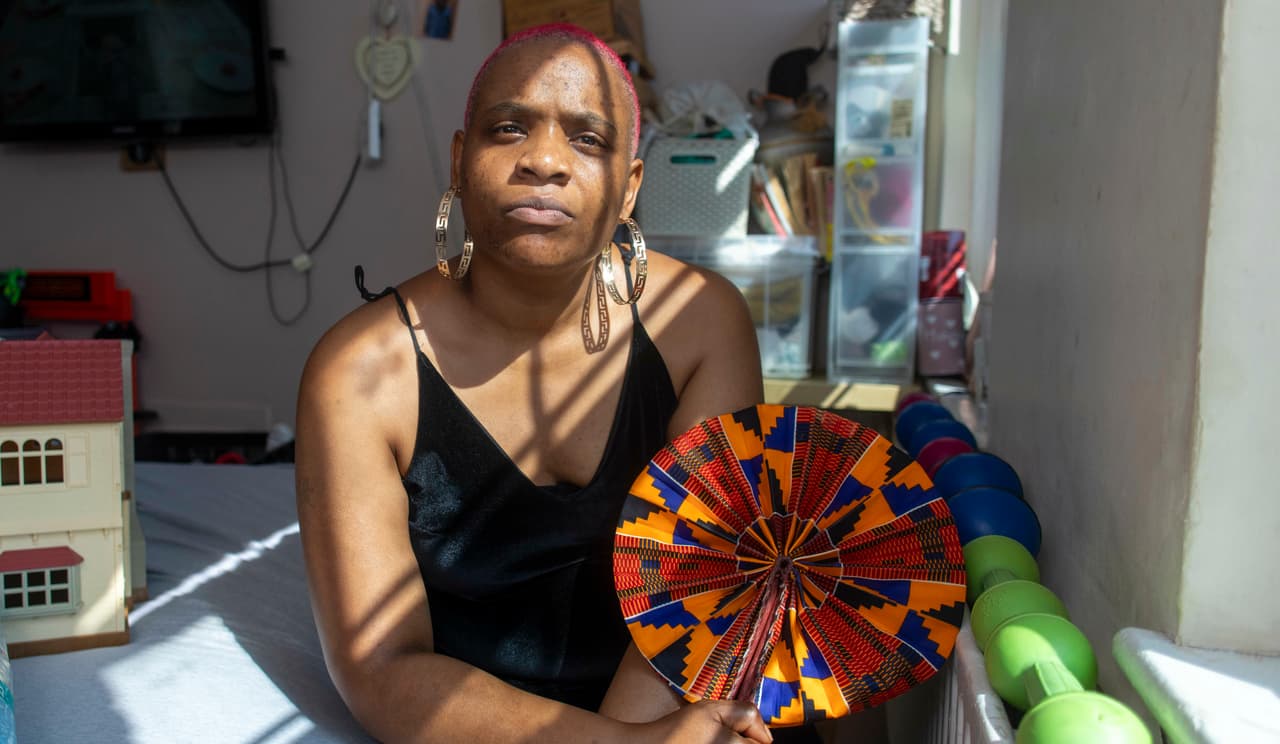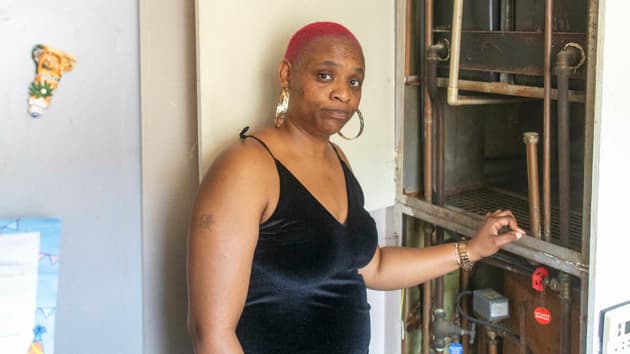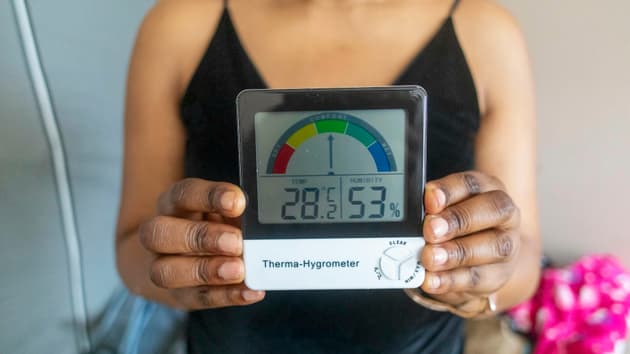
District heating leaves London residents sweltering during heatwave
As the UK experiences an unprecedented September heatwave, people in south London have been living in stifling conditions due to communal heating systems that residents cannot switch off.
The Bureau of Investigative Journalism (TBIJ) is investigating whether certain people and communities are disproportionately affected by rising temperatures. As part of the research, monitors have been installed this summer in more than 40 households in Southwark, south London, to measure the temperature inside people’s homes.
The World Health Organization’s recommended maximum safe indoor temperature for London is 25C. NHS advice, meanwhile, classes anything above 22C as “too hot” for infants. Data gathered by TBIJ’s study will be analysed in the coming months, but participants have said that the temperature in their homes has regularly exceeded the 25C threshold this summer.
The investigation follows a series of warnings that UK housing stock is ill-prepared for the effects of climate breakdown. The Climate Change Committee’s most recent report to parliament, in March, stated that “there remains a lack of policy to address overheating in existing homes”.
In parts of Southwark, the situation is exacerbated by the use of communal heating networks, or district heating. These systems, which serve flats or a group of homes, rely on a centralised heat generator connected to a network of pipes that deliver hot water and heat to individual properties. Some participants in TBIJ’s study live in homes heated by networks containing pipes that emit heat during the summer and cannot be turned off by residents.
Southwark was among the hottest places in the UK in 2021 and it has one of the highest number of homes heated by district networks: about 17,000.
“Our upstairs is very hot due to heat coming off the district heating pipes all year round,” said Alice, 35, who lives in Southwark with her partner and two children. “As a result we don’t tend to use the upstairs space during the summer as much as could be useful … We try keeping the bedroom doors shut, to keep heat out from pipes in the hallway, and curtains shut, to keep heat out from outside.
“At night time we have a fan in each bedroom. Our newborn baby is in one room with us and our toddler in the other room. Both rooms are hotter than the NHS guidelines. Particularly for our newborn, it makes me anxious.”
When Southwark council surveyed residents on district heating in 2020, a third of respondents said their property was regularly too hot, even in winter. And temperature is not the only issue posed by these systems. In January, the Guardian reported that residents of flats with district heating systems had experienced rises of up to 700% in their bills.
“I’m spending more money on gas and electricity every week,” said Kathleen Brown, 39, whose Southwark flat is served by district heating. “I top up every week and my energy bills are not in line with my low usage.”
 Kathleen Brown stands next to the district heating pipes serving her home
Alex Sturrock
Kathleen Brown stands next to the district heating pipes serving her home
Alex Sturrock
 The temperature indoors rose above 28C during the heatwave
Alex Sturrock
The temperature indoors rose above 28C during the heatwave
Alex Sturrock
The energy security bill has proposed regulation for district heating networks, which are not are not currently covered by the energy regulator Ofgem.
A review of studies published in Environmental Health journal in 2017 found that London, along with the UK’s south-east and eastern regions, had the highest proportion of excess mortality calculated during heatwaves.
A number of households monitored in TBIJ’s study contain people with health issues – such as diabetes, cardiovascular and respiratory conditions – that mean they may be more vulnerable to the effect of heat.
“My son has cerebral palsy and the heat is affecting his mobility,” said Kathleen. “The doctors have written countless medical letters to the council saying we need to be moved but we’re still waiting.
“It’s depressing, it’s really depressing. I’m talking to you now and I’m holding in my tears, because how many times can I tell this story?”
Because it allows heat from existing sources to be reused to heat homes, district heating has been promoted as an environmentally friendly system. As of 2021, it made up about 2% of domestic heating in the UK, but the Climate Change Committee says it could make up 20% of the domestic heating market by 2050.
Danielle Gregory of Tower Blocks UK, an organisation that specialises in tower block housing safety issues, said: “District heating systems can pose a real problem, particularly when it comes to unseasonal weather. When there are hot spells, sometimes the district heating is still going and residents have reported issues to us about not being able to turn off the heat in their individual properties.
“The effect it has can make their living conditions unbearably hot.”
The energy security bill, which could become law in early 2024, aims “to deliver a cleaner, more affordable, and more secure energy system”. But it remains to be seen if new regulation will resolve the issues posed by district heating networks in a warming climate.
Anna Mavrogianni, a professor of sustainable, healthy and equitable built environment at UCL, said: “Historically, heatwaves have not been a concern in the UK and homes and care homes have been constructed with the purpose of retaining heat during the winter period.
“The increase in frequency and severity of heatwaves poses significant risks to human health. Indoor overheating has been associated with worsening sleep quality, an adverse effect on maternal and mental health, increased risk of injury and accidents, and may exacerbate risks posed by existing health conditions.”
The Bureau newsletter
Subscribe to the Bureau newsletter, and hear when our next story breaks.
The Mayor of London’s office recently commissioned a climate resilience review to assess London’s preparedness for changing conditions, which is due to report later this year, while Southwark Council has launched a residents’ consultation into climate resilience and adaptations in the borough. The deadline for residents’ input is 9 October.
TBIJ’s investigation is a collaboration with Glasgow University, whose Urban Big Data Centre will be processing data from sensors this month to find out exactly how hot people’s homes have been this summer. Findings will be published later this year. If you’d like to stay updated, please email [email protected] or subscribe to the TBIJ newsletter.
Header picture: Kathleen Brown uses a fan in an attempt to cool down at her Southwark home. Credit: Alex Sturrock
Reporter: Dahaba Ali Hussen
Additional reporting: Natalie Bloomer
Project editor and community lead: Rachel Hamada
Bureau Local editor: Gareth Davies
Editor: Franz Wild
Production editor: Alex Hess and Emily Goddard
Fact checker: Alex Hess
The Hot Homes project is funded by Google News Initiative, Impact on Urban Health and Necessity, and is being carried out in partnership with the Urban Big Data Centre at the University of Glasgow.
-
Area:
-
Subject:




